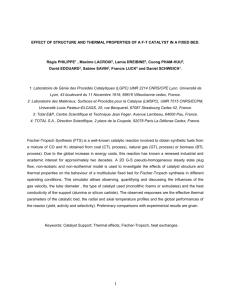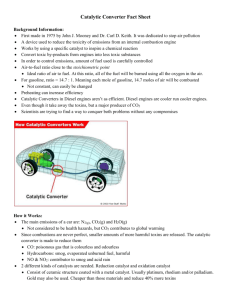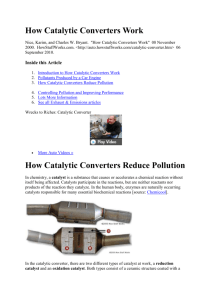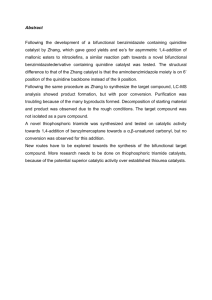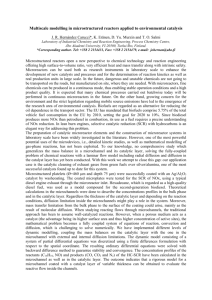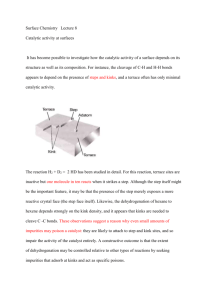2- BLM Hendriksen, et al., Topics in Catalysis, 36, (2005) 1–4
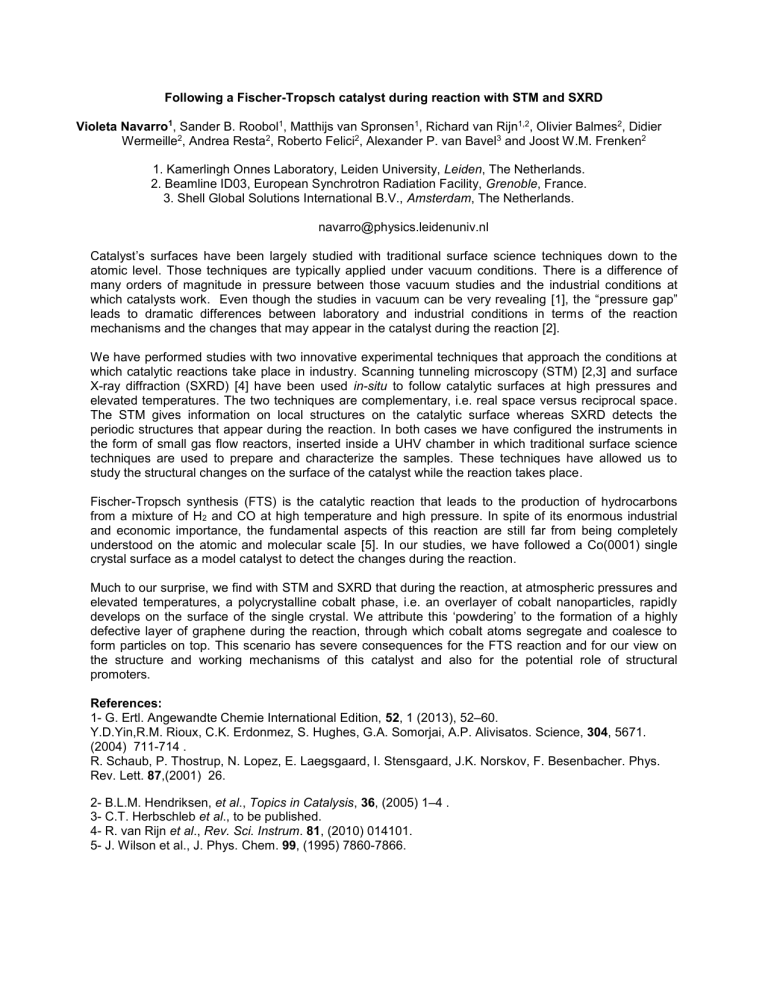
Following a Fischer-Tropsch catalyst during reaction with STM and SXRD
Violeta Navarro 1 , Sander B. Roobol 1 , Matthijs van Spronsen 1 , Richard van Rijn 1,2 , Olivier Balmes 2 , Didier
Wermeille 2 , Andrea Resta 2 , Roberto Felici 2 , Alexander P. van Bavel 3 and Joost W.M. Frenken 2
1. Kamerlingh Onnes Laboratory, Leiden University, Leiden , The Netherlands.
2. Beamline ID03, European Synchrotron Radiation Facility, Grenoble , France.
3. Shell Global Solutions International B.V., Amsterdam , The Netherlands. navarro@physics.leidenuniv.nl
Catalyst ’s surfaces have been largely studied with traditional surface science techniques down to the atomic level. Those techniques are typically applied under vacuum conditions. There is a difference of many orders of magnitude in pressure between those vacuum studies and the industrial conditions at which catalysts work. Even though the studies in vacuum can be very revealing [1], the “pressure gap” leads to dramatic differences between laboratory and industrial conditions in terms of the reaction mechanisms and the changes that may appear in the catalyst during the reaction [2].
We have performed studies with two innovative experimental techniques that approach the conditions at which catalytic reactions take place in industry. Scanning tunneling microscopy (STM) [2,3] and surface
X-ray diffraction (SXRD) [4] have been used in-situ to follow catalytic surfaces at high pressures and elevated temperatures. The two techniques are complementary, i.e. real space versus reciprocal space.
The STM gives information on local structures on the catalytic surface whereas SXRD detects the periodic structures that appear during the reaction. In both cases we have configured the instruments in the form of small gas flow reactors, inserted inside a UHV chamber in which traditional surface science techniques are used to prepare and characterize the samples. These techniques have allowed us to study the structural changes on the surface of the catalyst while the reaction takes place.
Fischer-Tropsch synthesis (FTS) is the catalytic reaction that leads to the production of hydrocarbons from a mixture of H
2
and CO at high temperature and high pressure. In spite of its enormous industrial and economic importance, the fundamental aspects of this reaction are still far from being completely understood on the atomic and molecular scale [5]. In our studies, we have followed a Co(0001) single crystal surface as a model catalyst to detect the changes during the reaction.
Much to our surprise, we find with STM and SXRD that during the reaction, at atmospheric pressures and elevated temperatures, a polycrystalline cobalt phase, i.e. an overlayer of cobalt nanoparticles, rapidly develops on the surface of the single crystal. We attribute this ‘powdering’ to the formation of a highly defective layer of graphene during the reaction, through which cobalt atoms segregate and coalesce to form particles on top. This scenario has severe consequences for the FTS reaction and for our view on the structure and working mechanisms of this catalyst and also for the potential role of structural promoters.
References:
1- G. Ertl. Angewandte Chemie International Edition, 52 , 1 (2013), 52 –60.
Y.D.Yin,R.M. Rioux, C.K. Erdonmez, S. Hughes, G.A. Somorjai, A.P. Alivisatos. Science, 304 , 5671.
(2004) 711-714 .
R. Schaub, P. Thostrup, N. Lopez, E. Laegsgaard, I. Stensgaard, J.K. Norskov, F. Besenbacher. Phys.
Rev. Lett. 87 ,(2001) 26.
2- B.L.M. Hendriksen, et al ., Topics in Catalysis , 36 , (2005) 1 –4 .
3- C.T. Herbschleb et al ., to be published.
4- R. van Rijn et al ., Rev. Sci. Instrum . 81 , (2010) 014101.
5- J. Wilson et al., J. Phys. Chem. 99 , (1995) 7860-7866.



